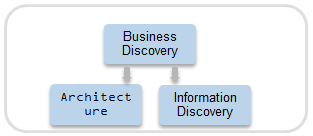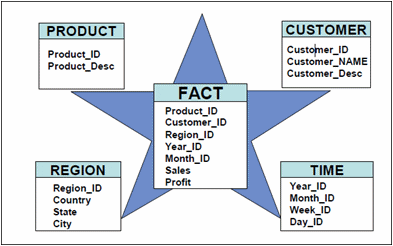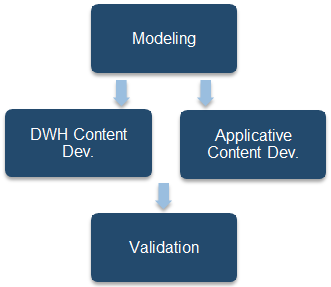Searching the Help
To search for information in the Help, type a word or phrase in the Search box. When you enter a group of words, OR is inferred. You can use Boolean operators to refine your search.
Results returned are case insensitive. However, results ranking takes case into account and assigns higher scores to case matches. Therefore, a search for "cats" followed by a search for "Cats" would return the same number of Help topics, but the order in which the topics are listed would be different.
| Search for | Example | Results |
|---|---|---|
| A single word | cat
|
Topics that contain the word "cat". You will also find its grammatical variations, such as "cats". |
|
A phrase. You can specify that the search results contain a specific phrase. |
"cat food" (quotation marks) |
Topics that contain the literal phrase "cat food" and all its grammatical variations. Without the quotation marks, the query is equivalent to specifying an OR operator, which finds topics with one of the individual words instead of the phrase. |
| Search for | Operator | Example |
|---|---|---|
|
Two or more words in the same topic |
|
|
| Either word in a topic |
|
|
| Topics that do not contain a specific word or phrase |
|
|
| Topics that contain one string and do not contain another | ^ (caret) |
cat ^ mouse
|
| A combination of search types | ( ) parentheses |
|
The information design and analysis phase help you determine your organization’s objectives and information needs and discover the data in the organization that supports the business requirements.
Design and Analysis
This phase is the preparation for the actual implementation but usually consumes more time and resources as the outcome of it should be exact design of the end user solution.
This phase has the following stages:

A structured methodology for understanding the company’s objectives and Information needs.
This methodology includes the following steps:
-
User Analysis.
-
Define the personas. For example, CEO, CFO, IT Manager, and more.
-
Define the personas business requirements
-
-
Decision-Based Analysis.
-
KPIs
-
Reports
-
Metrics
-
Dashboards
-
-
Information Availability.
-
Identify the Source systems that support business requirements
-
-
Assign Priorities.
The output of this stage is the design document that describes the solution from business perspective.
This stage implies discovering the data in the Organization that supports the Business requirements synchronizing between the available information, means of extracting it, and information required by the business. It’s also known as “Data Evidence” process.
Discover the data in the organization that supports the business requirements. Synchronize the available information and the means of extracting it with information required. This is the Data Evidence process. Information discovery includes the following steps.
-
Select the Source Contact Point.
-
Select a source expert to accompany the information discovery process
-
-
Define the Source Extraction Method.
-
Common extraction methods are DB query, API, Web Services
-
The new extractors can be developed based on the DCS API.
-
-
Identify the Source Table.
-
Identify configuration tables to populate Dimensions
-
Identify transactional tables to populate Facts
-
-
Define the Source to Target Mapping.
-
Identify Source Columns Mapping to Target Columns
-
Define data-processing requirements
-
 Architecture (Star Schema)
Architecture (Star Schema)
During this stage the Target data model is visualized using the Star-Scheme Model approach. Star Schema is a design method of dimensional modeling, in which data is organized in:
-
Facts: An event that is counted or measured, such as a sale or logon. Table Structure contains business measurements (numeric or time based) and Dimensional Intersection Point.
-
Dimensions: Reference information about the fact, such as period, product, or customer. Common Table Structure contains descriptive attributes.
A star schema is diagrammed by surrounding each fact with its associated dimensions. The resulting diagram resembles a star. Star schemas are optimized for querying large data sets and performing analytical queries that are used in data warehouses and Business intelligence systems.
Sample Star Schema

The Star-Scheme architecture creation process includes:
-
Review the ITBA UDM catalog.
-
Review the ITBA UDM Catalog, by the business context defined in Business Discovery phase.
-
-
Gap Analysis
-
Identify the OOB Target entities matches.
-
Identify the OOB Target entities to be extended.
-
Identify the New Target entities.
-
-
Design Dimension Tables
-
Define the Attributes.
-
Mark Slowly Changing Dimension columns
Note DWH supports 2 types of Slowly Changing Dimensions:
-
SCD1: no history preserving an update on one or more attributes will override the old value
-
SCD2: history preserving an update on one or more attributes that were marked as SCD2 will be added as new record and previous record will be marked as not active.
-
-
Design Fact tables
-
Define measures
-
Define granularity
-
-
Define Dimensional Intersection Points
-
Identify Fact to Dimension Links
-
Note The IDE tool is used only for designing Fact and Dimension tables and their intersection points.
Design and Analysis - Discover Data Evidence
It is necessary to understand and be familiar with the new data you want to develop. When there is a new source system involved, you must first understand how the data from the source appears and operates.
Data Evidence can be discovered as follows:
-
Understand how to extract the data.
-
Take sample files extracted from the source.
-
Examine the different fields that this source provides: It is important to recognize the fields and data that come from the source and to define the names of the fields as the source tables.
-
Define and plan in advance which extractors provide data for specific entities.
-
Understand variety, different lists of values, and end-cases.
-
Observe data behavior over time:
-
Understand what happens with data across time – is it the same file, only different dates?
-
Sizes of rows and volumes by types of customers.
-
Identify how this data correlates with existing data in the Data Warehouse.
At the end you should have a good sense of what this data looks like and how to develop extraction code for it.
-
-
Identify:
-
What is the required data to be available in the Target schema to support required KPIs.
-
What is the data that can come from the source (depending on technology).
-
Where do they meet in the middle, so eventually we have the outcomes of the extracted data and the DWH Target model.
-
For which columns do you want to preserve history.
-
After mapping between the Source and the Target, the design process is complete.
Development

We welcome your comments!
To open the configured email client on this computer, open an email window.
Otherwise, copy the information below to a web mail client, and send this email to SW-Doc@hpe.com.
Help Topic ID:
Product:
Topic Title:
Feedback:







